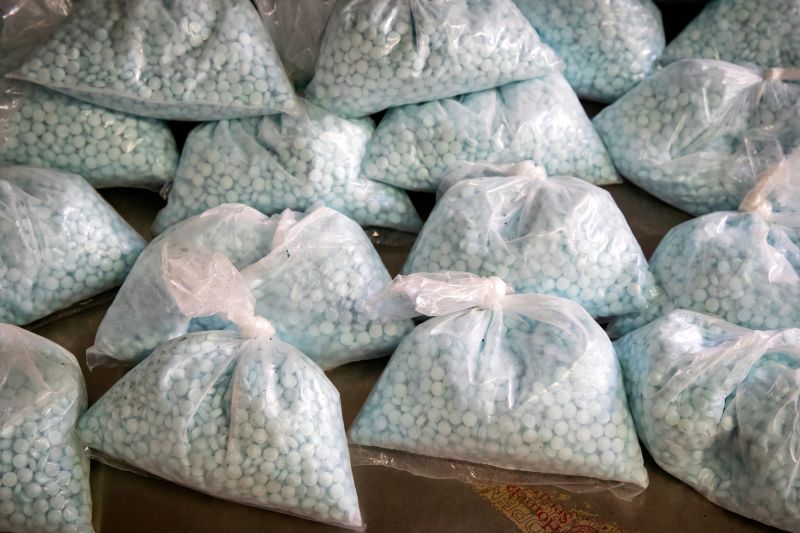Dozens are sick in E. coli outbreak linked to carrots. Here’s what to know about symptoms and how it spreads

Melinda Pratt’s Monday began like any other: waking up the kids, turning on the TV and making her morning coffee.
“I had it on my news channel, and I heard the carrots thing, and I leaned to look at the TV, and the Bunny-Luv carrots were on the screen,” she said. “I stopped everything then, and I went straight to my refrigerator and saw that I had those carrots.”
An E. coli outbreak connected to bagged organic carrots sold under several brand names, including Bunny-Luv and the store brands for Kroger, Publix, Target, Trader Joe’s, Walmart, Wegmans and Whole Foods, has led to one death and over a dozen hospitalizations, according to the US Centers for Disease Control and Prevention.
Anyone who purchased the carrots is urged to avoid eating them. Instead, throw them away and wash any item or surface that might have come into contact with them using hot, soapy water.
Pratt filed a lawsuit in the Kern County Superior Court in California against carrot producer Grimmway Farms on Monday, claiming that she tested positive for Shiga toxin-producing E. coli. Grimmway Farms declined to comment on the pending litigation.
What is E. coli?
The type of bacteria involved in this outbreak is E. coli O121:H19, a strain of dangerous Shiga toxin-producing E. coli, which has been linked to ground beef, romaine lettuce and water in the past, the CDC says. Shiga toxin can penetrate and kill cells, causing tissue damage.
Although most kinds of E. coli are harmless and can help with food digestion, others can cause health problems like urinary tract infections, pneumonia, sepsis and serious kidney problems like hemolytic uremic syndrome.
How do you get E. coli?
People typically get E. coli by consuming food or water that is contaminated with infected animal feces or through contact with feces from a person who’s infected.
Research has showed that about half of organic food outbreaks are linked to produce and that may be due to farming methods.
In order for agricultural products like fruits and vegetables to be certified organic by the US Department of Agriculture, farmers and growers need to avoid using prohibited substances, such as synthetic ingredients, when managing pests, weeds, disease and soil.
“In general, organic farms have less oversight than large, traditional-type farms,” said Dr. Nicole Iovine, an infectious disease specialist and chief hospital epidemiologist at the University of Florida Health. “Organic farms are more likely to use compost or manure rather than commercially bought fertilizers. If the compost is not properly processed such that pathogens naturally present in animal stool survive, the soil will become contaminated.”
What are the symptoms of E. coli infection?
Pratt remembers buying Bunny-Luv carrots, her go-to snack, on September 30.
Around October 10, she says, she started having stomach problems, including light diarrhea with bloody mucus.
“Every day, it just progressed worse, and it just wouldn’t stop,” Pratt said. “It went from having diarrhea from a few times a day, which was manageable, even stomach flu manageable, to upwards to about 10 to 15 times in one day.”
The tricky part, Iovine says, is that most of the symptoms associated with E. coli infection – such as vomiting, diarrhea and stomach cramps – are also common with other foodborne illnesses, so it can be difficult to tell if you have an E. coli infection.
Symptoms usually start around three to four days after consuming the bacteria. Young children and older adults are more vulnerable to severe infections.
How is E. coli infection treated?
“Most infections resolve on their own,” said Dr. Leana Wen, an emergency physician and clinical associate professor at George Washington University. She previously was Baltimore’s health commissioner, with responsibilities that included overseeing food safety. “Patients need supportive treatment with hydration but do not need specific therapy. Some benefit from antibiotics. Then there are some infections, notably O157:H7, where antibiotics are not used and in fact could worsen illness.”
People who have severe stomach cramps or bloody diarrhea or who are unable to keep down fluids should seek medical attention, Wen said.
Pratt’s symptoms became too much to manage at home on October 21.
“I couldn’t handle it anymore,” she said. “I couldn’t handle taking care of it at home anymore and watching my kids and my husband watch me. So I went to the hospital.”
Pratt was in the hospital for three days. She says she received nausea medications and pain medications.
“I didn’t stay still the entire time I was there because I was so uncomfortable with pain,” she said. “It was just an awful experience.”
How to prevent E. coli infection
Iovine says the best way to avoid E. coli infections is to stick with the CDC’s recommendations: Wash your hands frequently, follow safe food preparation guidelines, and wash fruits and vegetables before eating them, even if the package says they are already washed.
“Don’t ever trust that [label]. Always wash your vegetables,” she said. “It’s the last opportunity to remove any harmful bacteria that may be present. I’m really aware of things that grow in the dirt. I will rinse them, and then I remove whatever the outer layer is. If it’s an onion, I remove that outer layer. If it’s carrots, I always peel them, because you can’t get all the dirt off.”
When Pratt saw the news report about the outbreak, she dropped everything and began cleaning out her fridge.
“I went ahead and dumped all of my other food that I actually had in the bin with them,” she said. “I just dumped it. Brand new and all. I just didn’t want to take that chance. I literally bleached and soaked everything that they touched.”
The CDC also encourages drinking only water from safe sources. When you’re hiking, camping or traveling, make sure water is purified before consuming it. Avoid swallowing water when swimming or playing in outdoor water sources like lakes, ponds or pools.
Recovery and lingering effects
- Sign up here to get The Results Are In with Dr. Sanjay Gupta every Friday from the CNN Health team.
Nearly a month after she was hospitalized, Pratt says she still feels “completely sluggish.”
“I have not gotten my energy fully back since,” she said.
But Pratt said that one of the worst feelings was the loss of trust in her food’s safety.
“You buy the food; you bring it home; you trust it,” she said. “I’m just glad it was me, because I have two kids that absolutely love carrots, raw carrots, just like I do.”







